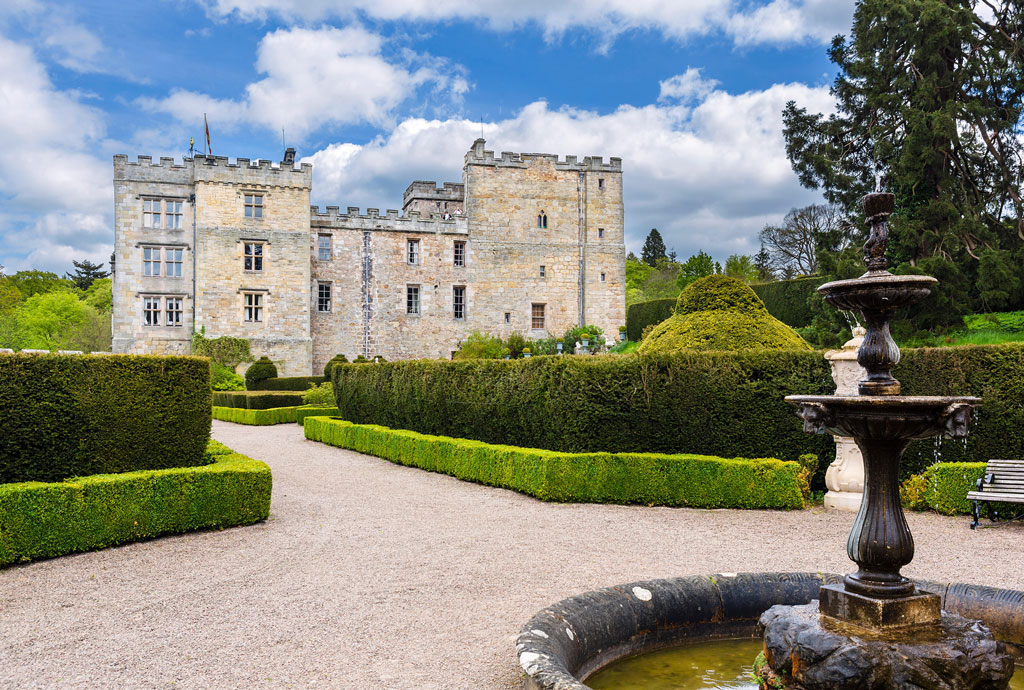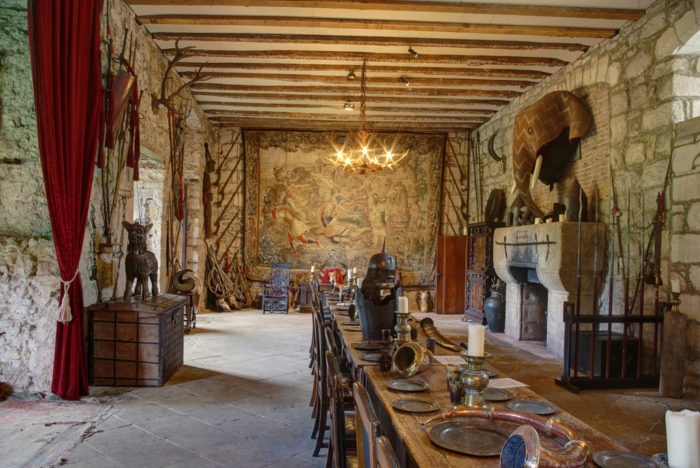A ghost tour of Chillingham Castle
Graced by royalty for centuries, Chillingham Castle is also one of England’s most haunted castles. Gilly Pickup explores this spooky history on her guided tour
Throughout the ages, many royal feet have crossed Chillingham Castle’s imposing threshold and one of the earliest monarchs to visit was Henry III in 1245. This now-ancient stronghold was built on the site of a former monastery that also meant it was in a handy location for a stop en-route to Scotland, a fact that Edward I, referred to as the “Hammer of the Scots”, took advantage of when heading north of the border to take on the might of William Wallace’s army in 1298. The building was upgraded to the fully-fortified Chillingham Castle in 1344 when a “licence to crenelate” was issued, permitting battlements to be built.
James VI of Scotland later dropped by to stay for a while at Chillingham when on his way to London to be crowned James I of England in 1603, while his son and heir, Charles I, laid his head here for a couple of nights just before he was taken prisoner. Edward VII sometimes stayed at the castle too, during his hunting visits in the Victorian era. The royal connection is still maintained through occasional private visits from members of the current royal family.
Until 1932, the grade I listed Chillingham Castle was owned by the Grey family – of Earl Grey tea fame – and their descendants, who acquired the title Earls of Tankerville. Probably due to increasing costs, the castle gradually fell into decay, but things kept rumbling along until the 1980s when Sir Humphry Wakefield and his wife Katharine decided to buy it. She is the daughter of Lady Mary Grey, a descendant of the family who established Chillingham.
The main building hasn’t changed much across the centuries. Elizabethan galleries were added in Tudor times and in the 18th century the grounds came under the influence of legendary landscape architect Lancelot ‘Capability’ Brown, his ideas carried out by the then royal gardener, Sir Jeffry Wyatville.

Beyond the garden, the woodland and lakes are home to wildlife including fallow and roe deer, brown hares, badgers, foxes and squirrels, while around 90 Chillingham ‘wild cattle’ also live there, fenced off from the public. Some believe that these magnificent animals are descendants of aurochs, the large wild cattle that once freely roamed our countryside and forests, but which almost became extinct in the Bronze Age.
They were once held in such high esteem that they were regarded as sacred and they remain rarer than many endangered species and are the only wild cattle in the world. Amazingly, they have never been touched by human hand and no vet has ever treated one. Visitors can go to see the wild cattle, but only on a guided tour with a warden who knows how close to them it is safe to get.
History and cattle aside, the castle is probably best known these days thanks to its reputation as one of England’s most haunted castles. Regular ghost tours and all-night ghost vigils are popular with visitors. There certainly seems to be something spooky going on inside the castle walls if extracts from the visitors’ book are to be believed. “I felt this hand on my arm. It was a most friendly feeling and I believe someone was trying to guide me to see something,” says one, while another claims “My camera just would not take a picture of the orbs and lighting I actually saw. Yet, when I developed my film, there were just those same orbs, but in different places and rooms. Literally, all over the place!”
At least the spirits involved in these incidences don’t sound too scary, not like the lost souls and their torturer who, it is whispered, appear from time to time in the torture chamber. Entities aside, those who feel squeamish at the thought of stretching racks, man traps and spiked chairs should perhaps give that part of the tour a miss.
In the chapel, the voices of two men have been heard but never seen. They stop talking if anyone tries to seek them out. More famous is the spectre known as the Radiant Boy whose cries of fear – or maybe pain – echoed through the corridors.
The story goes that as the cries fade, a halo of light can be seen, and a figure of a boy dressed in blue appears. While these sightings are hard to verify, we do know that a child’s skeleton surrounded by scraps of blue cloth was found behind a wall during repair work some years ago.
These spooky happenings aren’t restricted to the private rooms. Among those open to visitors is the Still Room where a painting hangs of the so-called haunting witch. Apparently, she curses anybody who steals anything from the room – it certainly must be a deterrent. American explorer Norman Vaughan’s sled hangs from that room’s ceiling, while also on view is a huge bowl, used for pouring boiling oil over unwelcome visitors back in the day.
The oldest room in the castle – and one that visitors can see – is the Edward I Room, which has been restored with a gallery, armour, weapons and period furnishings. In a hidey hole near a window, more than 100 Elizabethan documents came to light during renovations some years ago. Some of these relate to the Spanish Armada, others to the succession of James VI of Scotland.
The King James I Room is part of a three-room suite created especially for the monarch. It has a fine Elizabethan ceiling, walls covered in tapestries and silk, and it is furnished with copies of antique originals. Meanwhile, the armoury is filled with weapons and armour, as might be expected, yet there are also displays of poison blowpipes and a collection of rare insects. More weapons are displayed in the Elizabethan Great Hall where royals galore have been entertained over the centuries. The walls are lined with tapestries and antlers, the remains of the original chimney are in the south wall, while above that are two small windows.
The second of that suite of rooms is the Plaque Room Library, which holds reminders of the owner’s family, past and present and includes many paintings. One depicts Sir Humphry’s cousin, Lord Wakefield, who was London’s Lord Mayor during the First World War, and another depicts The Marquess of Bath, Lady Wakefield’s great-grandfather. Several others depict the Chillingham wild cattle. The library also contains a four-poster bed where King James sometimes received his guests and, of course, shelves lined with books, many relating to the Wakefield family.
The final room in that royal suite is the New Dining Room, which would have once been a place for royal visitors to wash and sleep in the Stuart era. The royal latrine was in the original tower stairs and the person who looked after the King earned the title ‘Groom of the Stool’. This, the king’s most intimate and therefore most powerful servant, who would normally have been a nobleman’s son or an important member of the gentry, had access to the bedchamber, closet and stool room.
As such, despite being the king’s official lavatory assistant, the Groom of the Stool ranked high in social circles. The white lion statues in the room are casts of a pair formerly in New York’s Metropolitan Museum of Art and later sold at Christie’s for £4 million.
Final highlights not to be missed include the Minstrel’s Hall with its balustraded gallery decorated with spears, tapestries and flags, one of which was brought from King George V’s royal yacht, while the Berthele Room, named after a German tank commander who was a prisoner-of-war, is full of Bronze Age stones which the man himself found.
Above all, Chillingham Castle is a great visitor attraction, somewhere to indulge in a dose of magnificence and legend, and experience a slab of Britain’s history.
Gilly is the author of The 50 Greatest Castles and Palaces in the World, published by Icon Books. www.chillingham-castle.com




